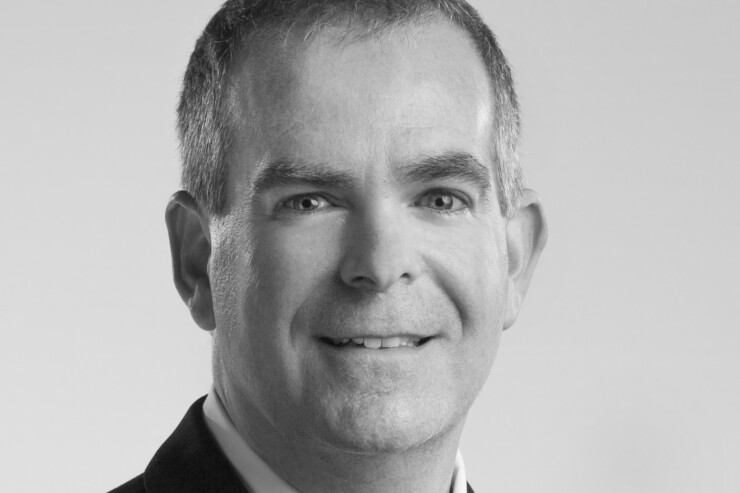When Community Memorial Hospital in Hicksville, Ohio, shuttered on Aug. 31, it became the latest small-town healthcare provider in the Midwest to run into insurmountable financial trouble.
The hospital in the rural community of 3,114 residents closed its doors for good three months after the state's tax commissioner rejected its request to file for Chapter 9 bankruptcy.
Reached by email, a spokesperson for Tax Commissioner Patricia Harris said the commissioner and the Ohio Department of Taxation had no comment.

"A Chapter 9 would have provided the best environment to sell assets because we would have been able to assure purchasers that they would be acquiring assets generally free and clear of liabilities except what the purchaser agrees to," Ronald M. Winters, principal at Gibbins Advisors, the hospital's receivership company, told The Bond Buyer. "That bankruptcy feature is helpful to promote better value for the estate and ultimately for creditors. Since a Chapter 9 was not possible, we are endeavoring to simulate that benefit with the receivership."
There have been other hospital closures in the region this year; in January, Hospital Sisters Health System and Prevea Clinic, a physicians' primary care network, announced they planned to
Other small rural Midwestern healthcare providers have
Because Community Memorial was a municipally owned hospital, it falls under the Chapter 9 municipal bankruptcy code, instead of the Chapter 11 that applies to a not-for-profit or for-profit enterprise.
To pursue a Chapter 9 bankruptcy, a source with knowledge of the hospital's situation said, the hospital needed a green light from the state. When it failed to get that, the Ohio Public Employees Retirement System, which is a large creditor and is owed a significant amount of money, filed a motion to have a receiver appointed.
"It is my understanding the hospital struggled to cover costs and balance sheet obligations and was under pressure from vendors and other creditors," Winters said.
The hospital has outstanding Series 2005 variable-rate bonds, issued as the Mark Milford Hicksville Joint Township Hospital District, that mature in December 2037.
The bonds are unrated, but according to the
"In my experience, it is common for bonds with credit enhancement provided with a letter of credit to have a letter of credit expiry prior to the bond maturity," said Winters. "The letter of credit issuer generally amends or extends the letter of credit… [but] I can't speak to what specifically happens in this case."
Community Memorial had experienced problems with its new electronic health system in 2021 and Ohio Medicaid payment system changes in 2023,
The hospital's
The pandemic — and the ensuing
"2022 and 2023 were incredibly tough years for the sector," he said. "There's a group that's sort of falling off the radar screen; seems like no matter what they do, what they try, they can't get to break even, can't even get, sometimes, a cash flow positive."
Many strong hospital credits are getting stronger, and those tend to be in high-growth markets, he said. Fitch described the current status quo in an

"The vast majority of NFP hospitals (65%-75%) will be somewhere in the middle, steadily working to improve operating margins," Fitch said in the commentary. "Struggles will intensify and may accelerate for 5%-10% of health systems."
Healthcare providers are unique among organizations providing services in that they can't pass costs on to consumers, Holloran noted. Hospitals and insurance companies have long played a cat-and-mouse game based on size and scale, with the upper hand decided by market share and market essentiality. When smaller hospitals go to insurers to negotiate an annual or multi-year increase, he said, "it's pretty tough." There's usually a big gap between the maximum increase possible and what those hospitals actually get.
"Most organizations that are struggling are generally… smaller, and in smaller, more rural areas," Holloran said. "And that means two things: the [low] population growth… and inputs, specifically labor, have just gone through the roof. You've got a stagnant to depopulating area, and the population is aging in place. … If you're not in a town or a place that's growing, expenses always go up, but you can't offset it with more volume or better rates. It's a very difficult thing to overcome."
With 75% of revenues fixed, and 75% of expenses (labor comprising about 50% and supplies and drugs the other 25%) variable and under extreme duress in recent years, some smaller hospitals' expense lines and revenue lines have crossed.
The gap between better- and worse-performing nonprofit healthcare credits is likely to grow in future years.
"You have definitely seen the investment-grade universe of not-for-profit healthcare providers stabilize in this post-pandemic environment," said Douglas Kilcommons, a managing director for public finance at Kroll Bond Rating Agency. "Not-for-profit healthcare was one of the last sectors, along with transit, to emerge from the pandemic and finally reach some level of equilibrium."
However, he added, "even very credit-worthy hospitals and health systems, including academic medical centers and those with a multi-state footprint, still face some degree of operational or financial challenges." The inflation that has pressured labor costs as well as maintenance and supply costs is affecting all providers.
Management, he said, is another key variable in ratings stability. A team that is able to take decisive action and pivot on a multi-year capital program in the face of challenges can allow organizations to preserve liquidity, stabilize the situation and preserve the overall credit.
"As you descend the rating scale to non-investment grade territory, you will tend to see standalone hospitals, often in challenged geographies, that lack the financial and operational benefits providers of a similar profile enjoy through participation in a larger system," he added. "Isolated, standalone hospitals in rural markets lack access to a critical mass of potential patients and often struggle to attract physicians and nurses... In those markets, people are more inclined to seek care from a larger hospital or system even if they have to drive to get there."
In an August nonprofit healthcare sector profile, Moody's Ratings said there were more healthcare systems with negative operating cash flow in 2023, especially at the lower end of the rating scale.
"The driving factors in the rise of systems with negative operating cash flow are higher labor costs and lower COVID-related government support," Moody's Vice President Daniel Steingart said. "Contributing factors also include higher denial rates and longer time to be paid from commercial insurers, drug inflation, and ongoing shift to outpatient services, which reimburse at lower rates than comparative inpatient services."
Steingart pointed out that higher-rated systems tend to be larger and to have stronger management teams, both important factors in financial recovery.
The rating agency's breakdown of financial performance by region showed that by some metrics, such as profitability and operating cash flow margins, the Midwest was the second worst performing region after the Northeast.
"Systems in high growth areas, like the South and Southeast, are performing much better, due in part to high population growth," Steingart said.
In an Aug. 30 report on nonprofit healthcare 2023 medians, S&P Global Ratings noted profitability measures in the sector remain "well below the decade's historical baseline," and days cash on hand is under continued pressure.

"Organizations are still being challenged by a higher staffing expense base with reimbursement rates that have improved, but haven't quite caught up to that higher expense base," Suzie Desai, U.S. public finance managing director at S&P, told The Bond Buyer. "The rate of increases in salary expenses and use of contract labor (as well as those rates) have come down, but salaries and related expenses are generally still increasing year over year on an already high expense base."
Even some higher-rated organizations have seen weakening credit quality, S&P said, as the inflationary pressures and staffing issues of recent years hit the entire sector.
Fitch's Holloran stressed that nonprofit healthcare providers are not out of the woods yet. And as Community Memorial's closure shows, for the bottom tier of organizations, things may get worse.
"The reality is, this is still a very challenging sector to work in, and there are still those big macroeconomic trends that we're watching," he said. "Low birth rates, aging population — you can see it coming a mile away.
"We really need those margins to start ticking back up, and it's a very hard sector to do that in," he added.





